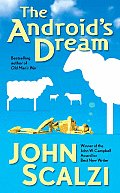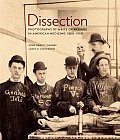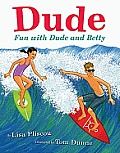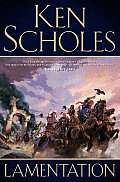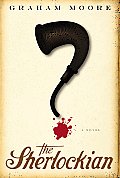Link to this review in the form of a comic strip by geneambaum tagged science • picture book
Link to this review by billba tagged science fiction
A human diplomat kills his alien counterpart, and suddenly the only way to save Earth from war is to find… a sheep? Well, it’s complicated. There’s a made-up religion (as opposed to the other kind, but don’t get me started), convoluted interstellar politics, artificial intelligence, courtroom maneuvering, and a rather charmingly dog-like alien that eats people (but he’s just following orders).
Why I picked it up: Despite being a huge John Scalzi fan (we’ve promoted his books in Unshelved several times) I somehow had never even heard of this book. Then he handed me a copy at TLA in while talking about his new car.
Why I finished it: War hero Harry Creek is assigned to find the sheep, and in doing so he meets pet store owner Robin Baker. They have some VERY cute dialog and I wanted to see more of their chemistry.
I’d give it to: Sean, who served in the Army. At one point our heroes end up traveling with a group of veterans, and he will appreciate the unique camaraderie they share.
Link to this review by geneambaum tagged science fiction • graphic novel • historical fiction
Atomic Robo is a witty, intelligent robot serving in the US Army during World War II. In the first adventure, he drops behind enemy lines during the invasion of Sicily to stop the German laufpanzers (“walking tanks”). In the second, he and a female special agent, The Sparrow, attack a train carrying two high-ranking scientists who are central to the Nazi special weapons programs. In the final adventure, he goes to Gurnsey Island to stop a Nazi electric cannon, but finds that his arrival was part of the plan. Several short, non-WWII stories are also included.
Includes #1-5 of Atomic Robo and the Dogs of War.
Why I picked it up: Saw it and remembered the Free Comic Book Day issue I read in 2008. (It’s included in this book.)
Why I finished it: The art, including the layout and colors, is just staggeringly good. The WWII action scenes have a feel similar to the violence in Mignola’s Hellboy because of the creators’ sense of humor, though they have a brighter, more cartoony feel. (This is, in part, because Atomic Robo is bulletproof and the stakes (for him, at least) are usually low.).
I’d give it to: Dave Toe, whose tastes in entertainment are a little more cerebral than mine. I think he’d be flummoxed at how much he enjoys this book, and he’s also a fan of Nicholai Tesla, Atomic Robo’s creator.
Link to this review by flemtastic tagged historical fiction • coming of age
Karl suffers a beating at school in Hitler’s Germany because a few bullies have discovered his Jewish heritage. At an art gallery opening where he is serving for his father, Max Schmeling, a world champion boxer, sees his bruises and offers to teach Max the science of boxing in return for a painting. As Max’s physical skills and confidence soar, his world is changing daily, with Jews becoming more and more persecuted. On Kristallnacht, he is separated from his parents and seeks Max Schmeling’s help.
Why I picked it up: Nominated for my American Library Association book committee.
Why I finished it: There is a strong historical fiction component that sent me online to view videos of the Joe Louis/Max Schmeling fights mentioned in the book. Max is a conflicted character who appears to be a good man but struggles with how much he can identify with his Jewish friends since he is a celebrated hero who supposedly proves Hitler’s theories about Aryan superiority.
I’d give it to: My sons Josh and Caleb because they are studying Bildungsroman as a genre in their AP Language class, and this is a classic example. My friend Ryan, who drags me to MMA fights and always wants to watch per-per-view boxing matches, because he would love the respect that boxing gets in this book.
Link to this review by sarahhunt tagged coffee table book • science
An astounding collection of American medical school dissection portraits: student teams posing with their dissection cadavers.
Why I picked it up: I had no idea that dissection portraits were a real historical thing!
Why I finished it: The staff at the Dittrick Medical History Center didn’t know it was a real thing, either, until they were approached by a collector who had enough historical photographs to show that this was not an isolated practice. Standard elements include students wearing gowns with their names chalked on the fronts and a written slogan about mortality on the dissecting table. The photos are hard to look at. They are now being used by some medical school instructors to start conversations about how the medical profession treats cadavers.
I’d give it to: Jeri, for the essay at the beginning tracing the shift from medical schools using corpses stolen from graveyards to using the bodies of condemned criminals and people too poor to be buried by family. Until people began leaving their bodies to science in the 1950s, the cadavers were mostly from families without the power to stop the practice, and were mostly African American.
Link to this review by sharonlevin tagged humor
This parody of the old Dick and Jane books is a much less bogus and more righteous easy reader. We follow Dude’s adventures at the beach with Betty, a surfer bunny, and Bud, “a most excellent dog.”
Why I picked it up: I remember reading the Dick and Jane books as a kid and the second I saw this cover I knew it was a must read.
Why I finished it: When Bud eats Dude’s Burrito, it reads, “Bud is harshing Dude’s mellow.” Worth finishing for the glossary which defines “Valley, the” as “An uncool place far away from the beach.”
I’d give it to: Ismayil, my spousal unit, whom I have been calling “Dude” for twenty-five years, and who knows what a Betty is.
Link to this review by geneambaum tagged fantasy • romance
Windwir has been destroyed. It was a city where forgotten knowledge was pieced together and housed, the center of the Andofrancine Order’s power.
Jin Li Tam, the beautiful consort of the man responsible for Windwir’s destruction and a spy for her scheming father, watches horrified as a vast column of smoke and ash rises into the sky, marking where the great city once stood. The swashbuckling Gypsy King Rudolfo rides to investigate with his scouts. An orphaned survivor on the outskirts of Windwir mourns for his father. And a former Andofrancine Pope who faked his death rides back to Windwir to bury the dead.
The Named Lands are soon at war around the ruins of the city. Most are trying to grab political power and the lost knowledge of Windwir. Some seek justice for the city and the thousands that died there.
Why I picked it up: Ken Scholes gave me a copy at ALA last year and then Ben Rubinstein tweeted about how much he liked it.
Why I finished it: It’s at least partially librarian-porn. Windwir housed the greatest library in the world. I wanted to see the bastard who cut its budget — I mean, the villain responsible for its destruction — brought to justice. And there’s also a plan to preserve some of its knowledge that doesn’t involve eBooks.
I’d give it to: Flemtastic. He reads FAST. The third book in this series is already out, so I hope three thick fantasy novels will keep him busy over an entire weekend. Plus I know he’s secretly a sucker for a good love story.
Link to this review by flemtastic tagged romance • coming of age
Teenager Madeline earned the nickname Mad Dog Maddie when she partied, although she doesn’t remember why. That’s why she was in rehab even though she’s only sixteen. There she met Stewart, a slightly older boy with whom she shared popcorn and conversation during movie night. She also picked up life skills to help her cope with life.
After returning home, everything has changed and even innocuous situations can be dangerous to her sobriety. At high school, a geeky kid befriends her, and she learns that she enjoys the discipline of studying. Trying to pick up credits at summer school while staying in contact with Stewart, Maddie begins to have a sliver of hope for her future, something she hasn’t felt in quite a while.
Why I picked it up: Nominated for my ALA committee Best Fiction for Young Adults.
Why I finished it: It brought a real focus to what it is like for an addict to try to change lifelong habits and stay sober in the real world. Maddie and Stewart have a desperate love, not realizing it is probably born out of their shared experiences.
I’d give it to: Jake, who would like the quotable lines, like one of my favorites from Martin. When Maddie accuses him of being dorky, he claims to be a geek instead: “Dorks are physically uncoordinated. Geeks have specialized knowledge of complex systems.”
Link to this review by davidtomashek tagged mystery • literary
The Baker Street Irregulars are the crème de la crème of Sherlock Holmes scholars. For Harold White, getting inducted into their ranks is the high point of his life. When Harold stumbles across the murdered body of a fellow Irregular, he does what no sane person would do in the age of CSI — he searches the scene for clues. He soon realizes the killer could only be a fellow Holmes scholar, and he follows a trail of clues that lead him not only to the killer, but to the missing diary of Arthur Conan Doyle.
What are the contents of the diary, and why was it kept hidden? In 1901, seven years after Arthur Conan Doyle killed Sherlock at Reichenbach Falls and vowed to never write another Holmes story, he finds himself embroiled in a real mystery. Someone sends Doyle a bomb in the mail, and it’s linked to several killings in London. Doyle vows to investigate and outperform his own creation in the art of detection. But he finds that real life is a messy affair, quite unlike his books.
Why I picked it up: In addition to its intriguing premise, this book kept popping up: the Powell’s website, NPR’s Weekend Edition, a display table in my local library. All right already, I’ll read it.
Why I finished it: The book is full of fascinating details about Holmes, Doyle, and the hundred-year history of Sherlock Holmes geeks, all written in an engaging and humorous style. After the body is found, the Irregulars jump into action, many of them “accusing the man across the table of some vile treachery. And, moreover, actually employing phrases like ‘vile treachery’ in doing so.”
I’d give it to: Grant, who liked The Devil in the White City, because he would appreciate the descriptions of this seedy urban landscape in 1901, and how the transition from gaslight to electric ended the dark shadows (and some of the mystery) of London’s streets.


